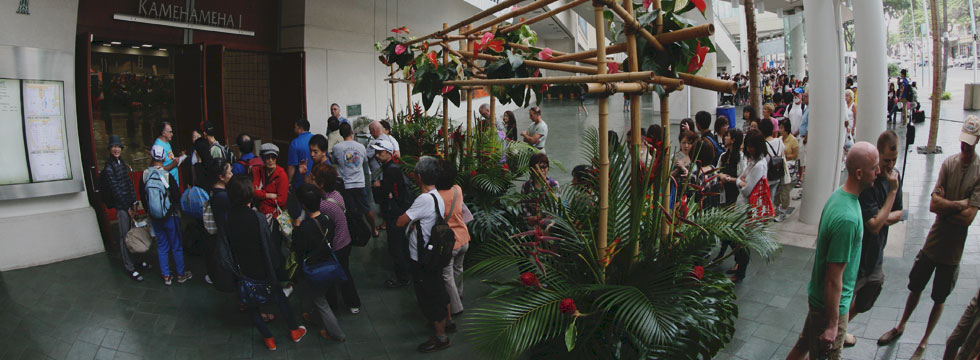Binance Cryptocurrency Exchange for Bitcoin, Ethereum & Altcoins
November 20, 2020 3:39 pm Leave your thoughtsThe TabTrader Academy has dozens of articles that will answer all your most burning questions. Regardless, AMMs solve a key headache for crypto traders wishing to exchange as and when they desire, without arbitrary boundaries or ‘terms and conditions’ laid down by third parties. An AMM can work in different ways, with different equations, and some DEXes where to buy tmtg employ hybrid models for handling token swaps. Governance tokens are cryptocurrencies that represent voting power on a DeFi protocol.
What is an Automated Market Maker?
This mechanism has an additional benefit of ensuring that liquidity stays available — it is only the price required to gain access to it that changes. Not all AMMs are created equal, but preferred models quickly emerged as DEXes gained traction. Malicious actors can take advantage of liquidity scenarios to manipulate how profitable a victim’s DEX trade ultimately is.
In practice, many investors seek to maximize the potential yield by providing liquidity in all number of places to various projects, and these entities are called yield farmers. AMMs offer advantages that help introduce many DeFi features that traditional exchanges cannot replicate. Learn what crypto faucets are, how they function, and how you can earn small amounts of cryptocurrency without any financial investment. Discover what stablecoins are, how they work, their types, benefits, uses, and risks in this comprehensive guide to stable digital assets.
How Does an Automated Market Maker (AMM) work?
As a general rule, however, the more liquidity there is in a pool, the less slippage large orders will incur. Uniswap learn from the best is a market maker giant with over $3 billion total value locked (TVL), dominating over 59% of overall DEX volume. As per the formula, if the supply of one token (x) increases, the supply of the other token (y) must decrease, and vice versa, to uphold the constant value (k). As the price rises, the ratio of ETH and DAI in the pool changes to where there is now half as much ETH in the pool as before and twice as much DAI.
In DeFi protocols like an automated market maker, any person can create liquidity pools and add liquidity to trading pairs. Liquidity providers then receive LP tokens against their deposits which represent their share in the liquidity pool. Automated market makers (AMMs) are decentralized exchanges that use algorithmic “money robots” to provide liquidity for traders buying and selling crypto assets. Automated market makers (AMMs) are a type of decentralized exchange (DEX) that use algorithmic “money robots” to make it easy for individual traders to buy and sell crypto assets. Instead of trading directly with other people as with a traditional order book, users trade directly through the AMM. Automated market makers (AMM) are decentralized exchanges that pool liquidity from users and price the assets within the pool using algorithms.
What Is an Automated Market Maker (AMM)?
The exact mechanics vary from exchange to exchange, but generally, AMMs offer deep liquidity, low transaction fees, and 100% uptime for as many users as possible. In other words, these market makers constantly offer to buy and sell an asset at multiple prices so that users will always have someone to trade against. The process of providing liquidity to the exchange is called market making, and the entities that provide this service are called market makers. AMMs, along with smart contracts, liquidity pools and oracles, are the building blocks of any decentralized exchange, or DEX. These are critical features that enable investors and traders to exchange tokens at optimal prices in a manner that is transparent, trustless and secure.
And V3 offers concentrated liquidity, a feature that lets liquidity providers earn similar trading fees at lower risk, since not all their capital is at stake. To mitigate this occurrence, some crypto exchanges employ the services of professional traders — in the form of brokers, banks and other institutional investors — to continuously provide liquidity. These liquidity providers ensure that there are always counterparties to trade with by providing bid-ask orders that would match the orders of traders. The process involved in providing liquidity is what we call market making, and those entities that deliver liquidity are market makers.
Smart Contracts
- If you haven’t done so, give the TabTrader app a go, now available for iOS, Android and Web.
- As such, most liquidity will never be used by rational traders due to the extreme price impact experienced.
- The AMM is responsible for matching trades, and as such, when a trader interacts with the DEX smart contract, they are altering the available liquidity that the AMM monitors.
This mechanism thus determines asset pricing, according to the basic principle of supply and demand. Decentralized exchanges do not possess this centralized infrastructure, and are open access — anyone can use them, no matter what their reason or goal what is bitcoin and should i invest in it might be. Decentralized trading ecosystems require infrastructure that is free of arbitrary decision-making, and that is where AMMs come in. You can try out smart order routing by registering an account on Shrimpy and swapping tokens. After approving the transaction, the AMM deposits UNI tokens into the ETH-UNI pool. Finally, it sends the quoted amount of ETH from the pool to the customer’s wallet.
As a general rule, the bigger the diversion between the tokens’ prices after they’ve been deposited, the more significant the impermanent loss. A typical centralized cryptocurrency exchange will use an order book and an order matching system to pair buyers with corresponding sellers. The order book is a dynamic, real-time electronic record that maintains and displays all orders to buy or sell a cryptocurrency at different prices at any given point in time. The order matching system is a specialized software protocol that matches and settles the orders recorded on the order book. Simply put, market making is the activity of providing liquidity to a market by simultaneously quoting prices to both buy and sell an asset. AMMs can make use of off-chain sources like price oracles to offer reliable price discovery and capital efficiency.
Categorised in: Cryptocurrency News
This post was written by vladeta



